On Sunday 23 October 2011, a friend suddenly died as I just so happened to be out taking pictures not only near her home but of trains on the railroad where her father worked.
In that essay, I wrote about the concept of “significance” and tried to find meaning to it all.
Five days later was her funeral, and I had long intended to make a blog post with the pictures and insights from that day, but I haven’t done it until now, 10 years later. I could never find the right words for the insights and emotions that I felt that day, but I do now, and for an unsettling reason.
Friday 28 October 2011 was the day of her funeral and burial. I attended it and saw people I expected to see and didn’t see at least one person whom I expected to see. As I wrote in the “October 2011 Sampler” essay, maybe there actually was nothing really super insightful about this day, but two factors made it memorable.
The first were two separate things that Rie’s father, who had worked for the Illinois Central Railroad and who had shown me some of his picture albums from his time on the IC, told me each on a separate occasion that day.
I told him that at about the moment that she died, I was coincidentally in the Bonnet Carré Spillway taking a picture of a train with a BC Rail locomotive moving on track on which he had worked.
He said “unbelievable.”
In retrospect, I wish that I had had something better to tell him, something about his daughter, than about myself, and maybe I did tell him something about her, how she affected me, but I just don’t remember it now, a decade later.
To get from the church in LaPlace to the cemetery in Destrehan, we had to cross the Bonnet Carré Spillway on Airline Highway. In yet another strange coincidence, just as we were traveling on Airline Highway across the spillway, Canadian National Railway train A419 was moving in the same direction as we were but to the south on the old Y&MV bridge. I was not going to break from the funeral procession to take a picture, even if it would not mean that I’d be late for the burial; so, I just grabbed the camera with the telephoto lens, rolled down the passenger-side window, and did the best that I could do.
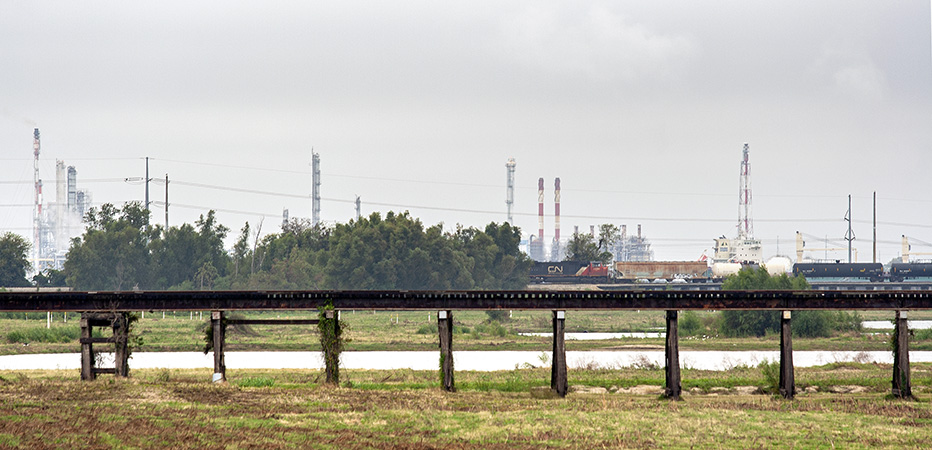
That’s the Kansas City Southern Railway bridge in the foreground, and, even with two separate railroads here, there are not many trains that cross the spillway here (as opposed to the McComb Subdivision bridge at the end of the spillway) per day. So, it’s rather remarkable that we just so happened to be passing here when the daily long-distance train out of Geismar was also crossing the spillway.
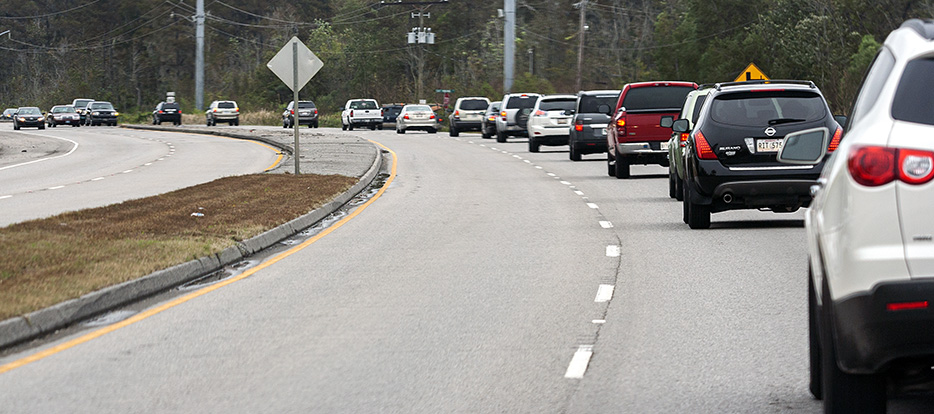
That’s the funeral procession; yes, I took the picture while driving.
To get to the burial services, all of us had to cross over Destrehan Yard on I-310, a detail that will become important later in this story.
On River Road, in front of the church area by the road, we could see what apparently were students at Saint Charles Borromeo Elementary lined up in honor of the funeralized, and, unprepared, I was able to get only cell-phone snaps.
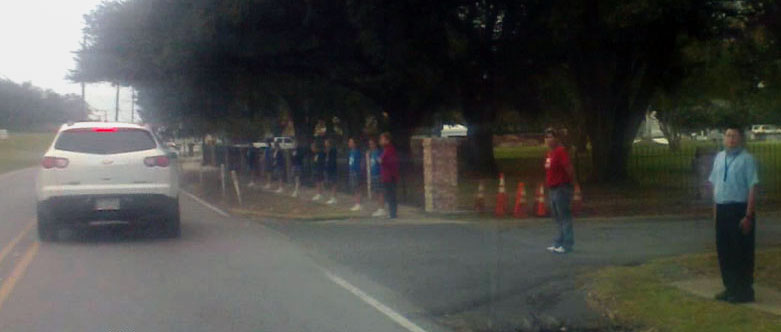
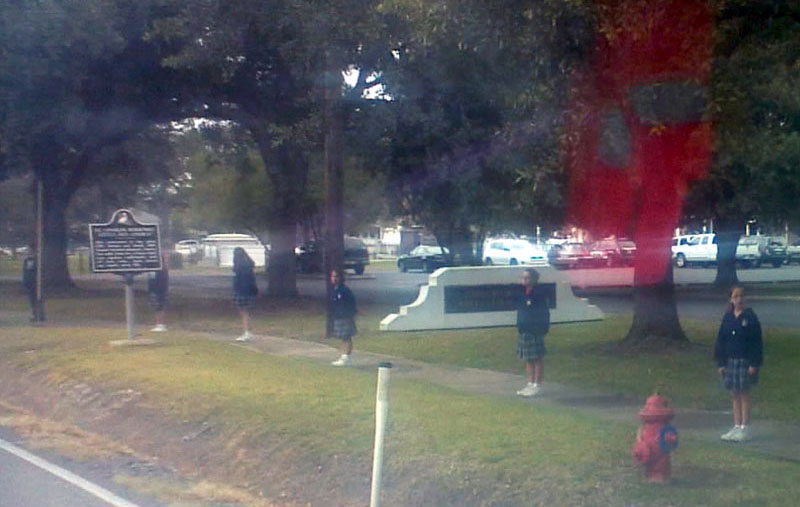
This scene was really powerful for me.
I wonder how common this is.
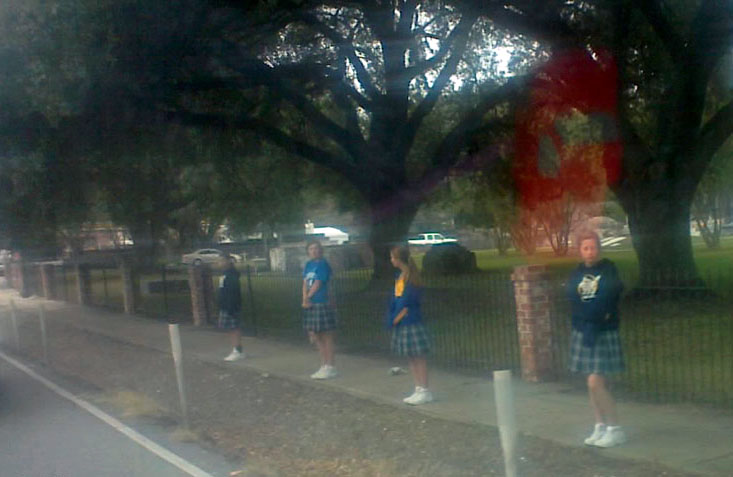
I was moved by this scene.
The burial services were peppered and punctuated by the nearby sounds of the violent collisions of steel inherent to a nearby railroad job in Destrehan Yard doing some airless kicking of cars into the yard.
The more memorable and heartfelt thing that Mister Ernie said to was at the burial.
“I’m riding in my daughter’s funeral procession,” he said, “and I’m looking over to see what is in Destrehan Yard.”
Maybe it was not a moving thing for him to think or to say, but it was a moving thing for him to share with me, a relative stranger to him whom he had nonetheless met years before because I was his daughter’s train-obsessed coworker.
I thought that it was super profound at the time, but, in retrospect, I see that it really was just a neat way for him to connect with me by sharing how meaningful having been a railroader was for him, even if it was only brief for him, as he later worked at a local refinery for, I think, 30 years, and maybe he appreciated that one of his daughter’s friends cared about his railroading.
I don’t know if there is a big lesson there beyond the meaningfulness that inexplicable interests like interests in railroads is, though I invite you to attempt to infer one! I think that I found it so significant both due to the sad weightiness of the day and that it momentarily made me feel important and appreciated.
Maybe that is why I wanted to believe that what he said had significance. Maybe the temporal nature of our lives meant that the desire for significance was so strong.
Maybe I made him feel appreciated or even ‘seen’ in this tragic moment for him, and maybe that is all that matters.
After the funeral and burial ended and the people whom I knew from the newspaper went home, I first went to Destrehan Yard.
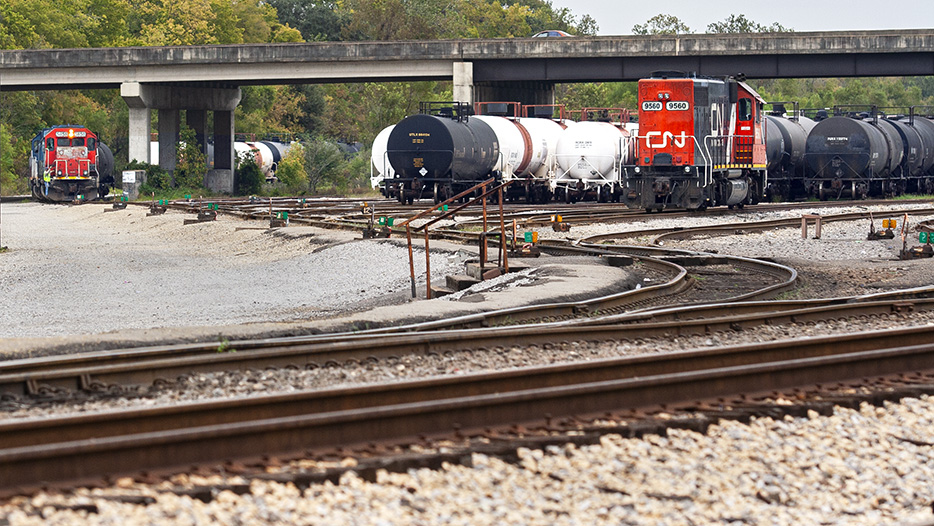
At the far right, below, appears to be the tail end of the A419 that I saw and photographed on the spillway.
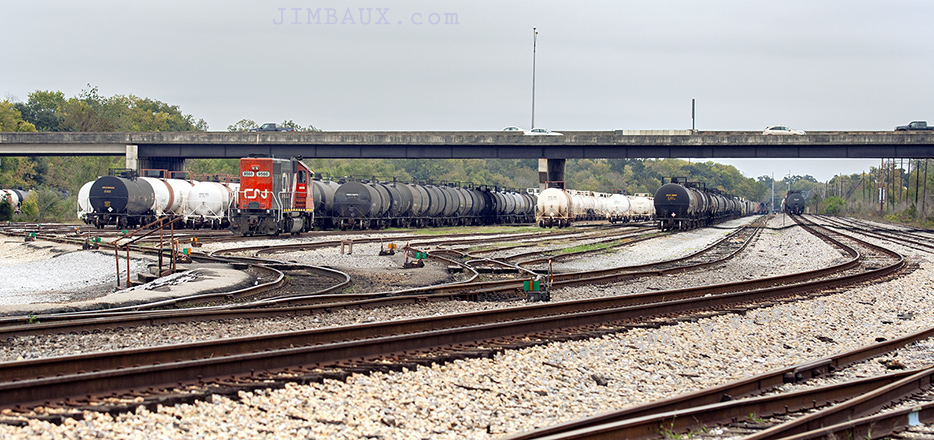
That is the I-310 overpass in the background.
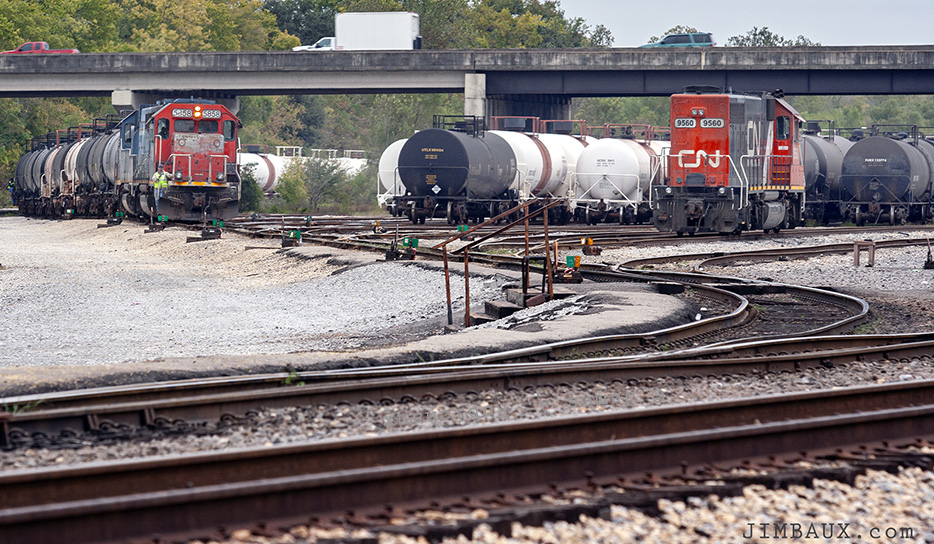
That is the overpass on which we rode, left to right in the image, to get to the cemetery.
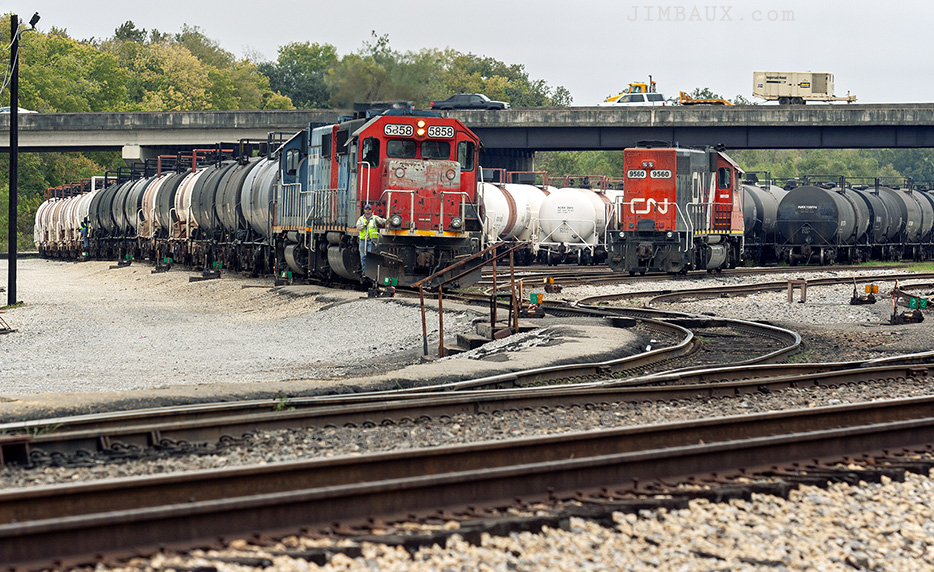
I was seeing a train here, doing something that I love, but it made me feel lonely.
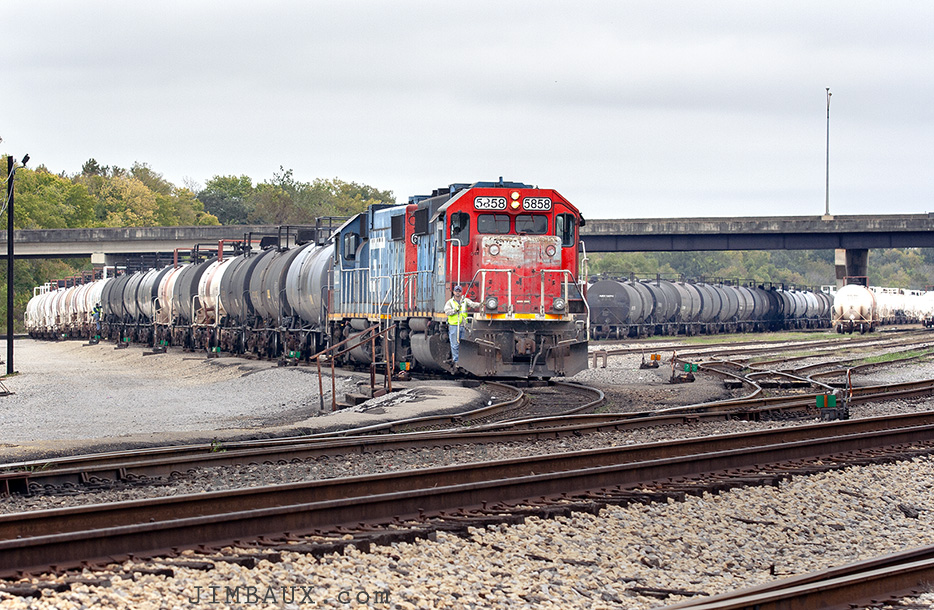
Actually, this may have been the first time that I shoot pictures from this location.
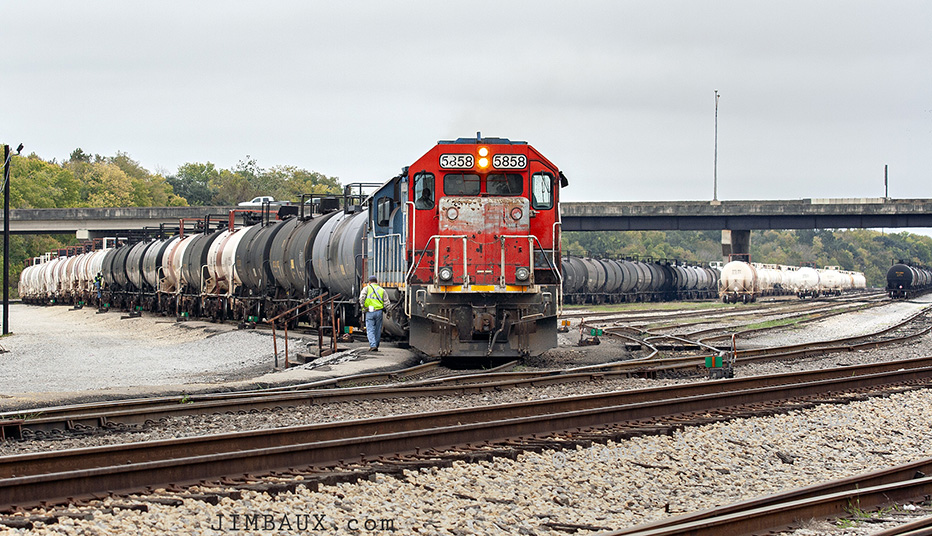
This locomotive has seen better days.
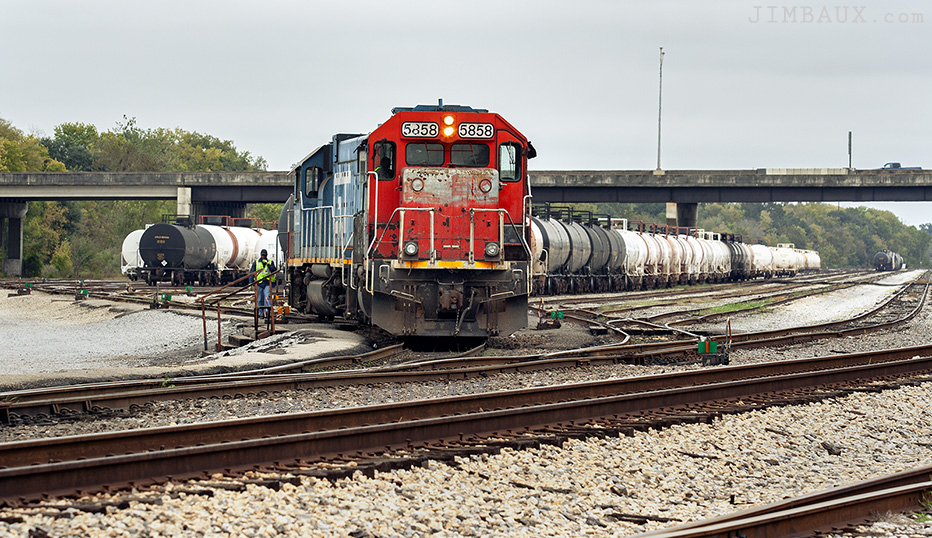
I really like the GTW paint scheme.
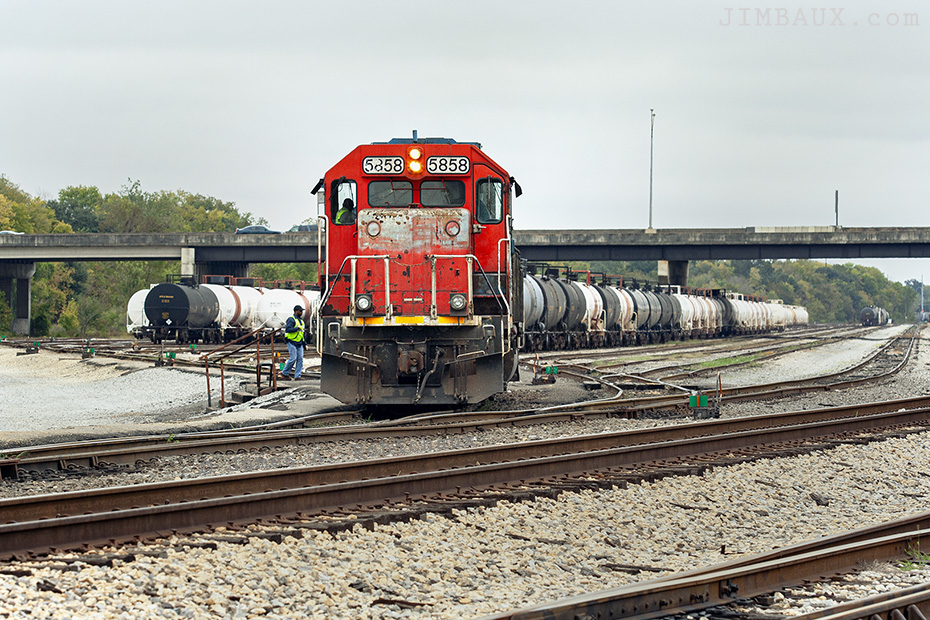
I then went to the spillway, and, there, I had another emotional experience.
I had been here just five days before, probably not long after Rie died, and that is about when the second memorable thing happened, and, no, I don’t mean a train or a picture, even though they help with the story and the affect.
So, as I had photographed, by just pointing the camera out of the passenger-side window as I was driving, the A419 crossing the spillway when I was crossing the spillway in the same direction in the funeral procession earlier in the afternoon, I returned to the spillway after the services were completed and immediately found the L516, with two black IC SD70s as power.

Look at that sky. It means something.
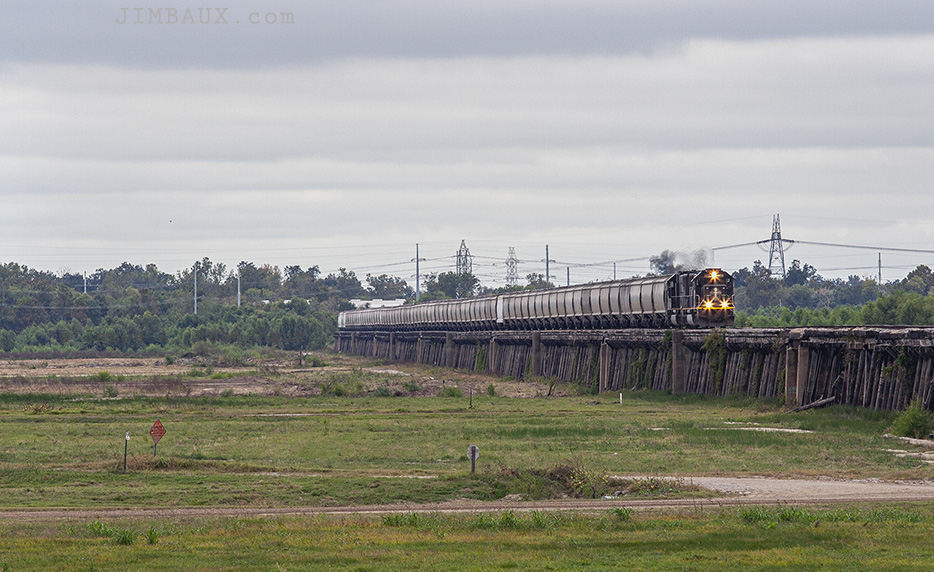
I felt something.
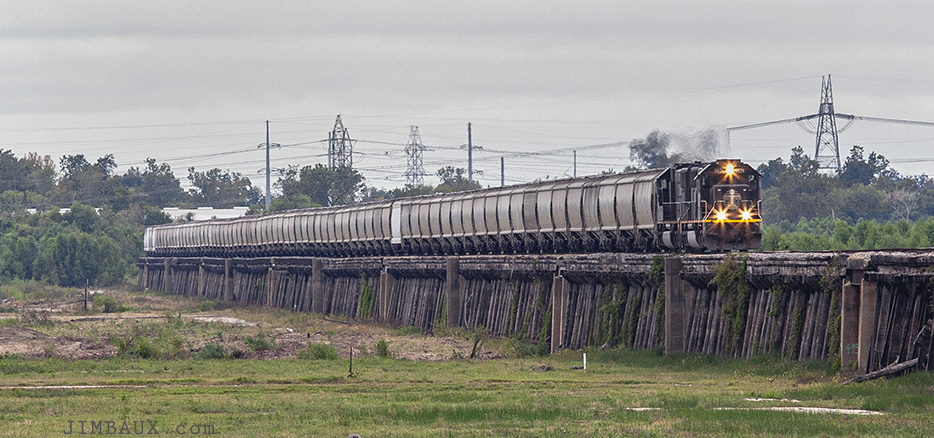
This was a good view of a cool train, with some increasingly rare pre-merger spartan-cab power, and with clouds in a way that I had rarely if ever had here before.
The clouds were part of the second memorable factor of this day.
As I was standing there in my long-sleeved shirt and my tie, my funeral clothes, photographing this train, the temperature really dropped. It was as if I felt the cold front arrive as it arrived.
Normally, I love cold weather, and the temperature drop here didn’t really bother me, but something about the sadness of what I had just experienced combined with the desolate emptiness of the spillway made me feel powerfully lonely while also powerfully alive. It was as if I, a person who is more heat sensitive than anyone he knows, was finally, for the first time in my life, experiencing cold in the alienating and threatening way that literature and popular culture had always told me to think of cold, even though I have experienced much colder temperatures in and near Washington, DC.

It was powerful.
It was powerfully lonely.
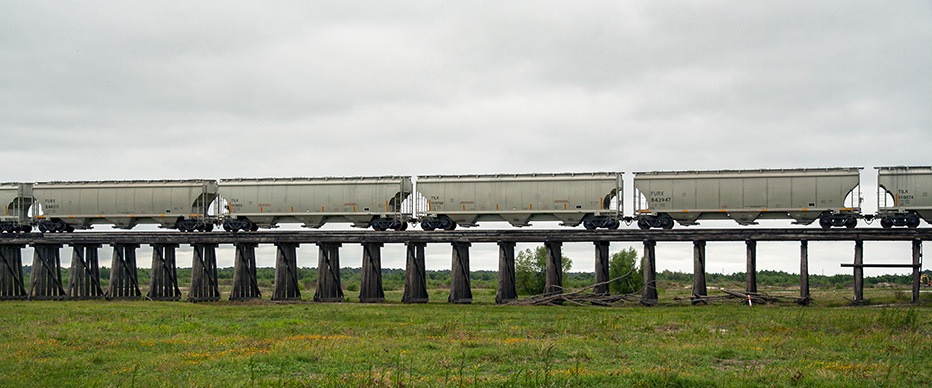
I think that I know what it means now, and I think that it’s something that I didn’t want to face then.
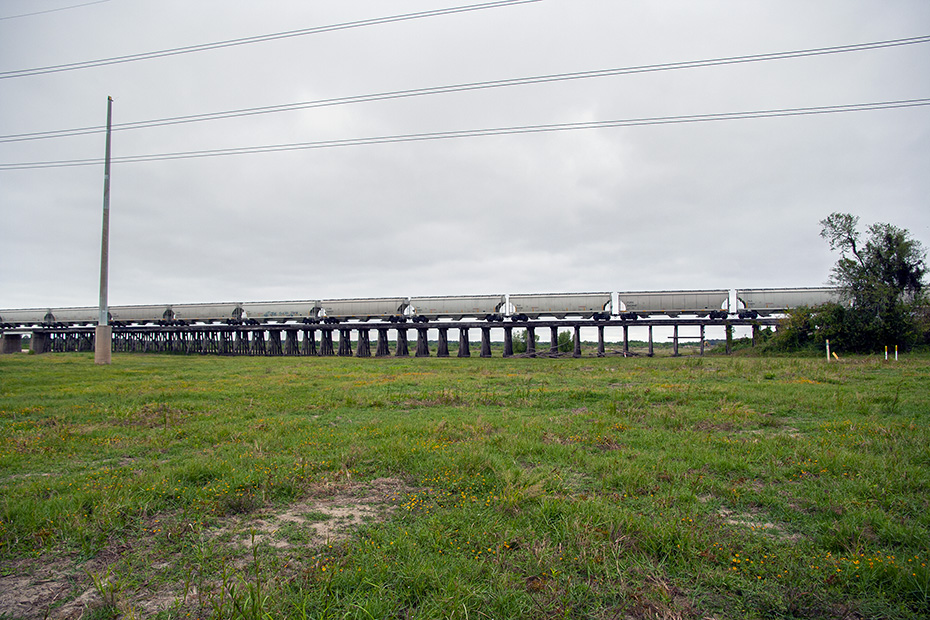
Maybe the lesson here is that there is no and will be no lesson, that this is just it, regardless of how much I want to draw something positive from a tragedy.
Maybe I didn’t want to face the fact that there was no lesson here.
Maybe I struggled to make this mean something.

Maybe a lesson from the getting-cold spillway after Rie’s funeral is that the fear, the loneliness, and the emptiness don’t go away, and maybe fear of facing that by acknowledging it is why I hesitated to write an essay about this day. Maybe I feared its lack of significance, and maybe that’s because I feared my lack of significance.

Maybe saying this no longer costs me anything. Maybe it wouldn’t have cost me anything back then, but I still had some hope for a promising life then.
I went to see the school where Rie had worked. I had never been there before.
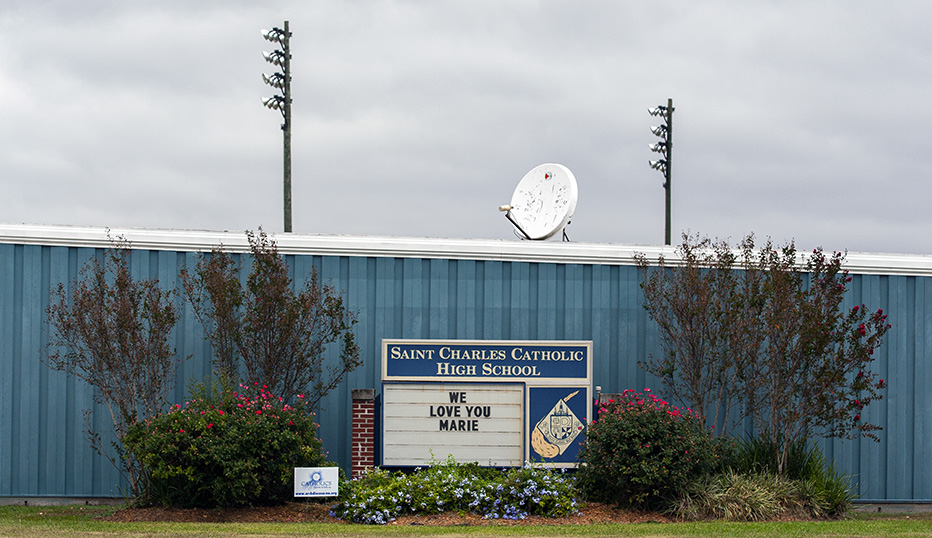
She clearly had had an impact here.
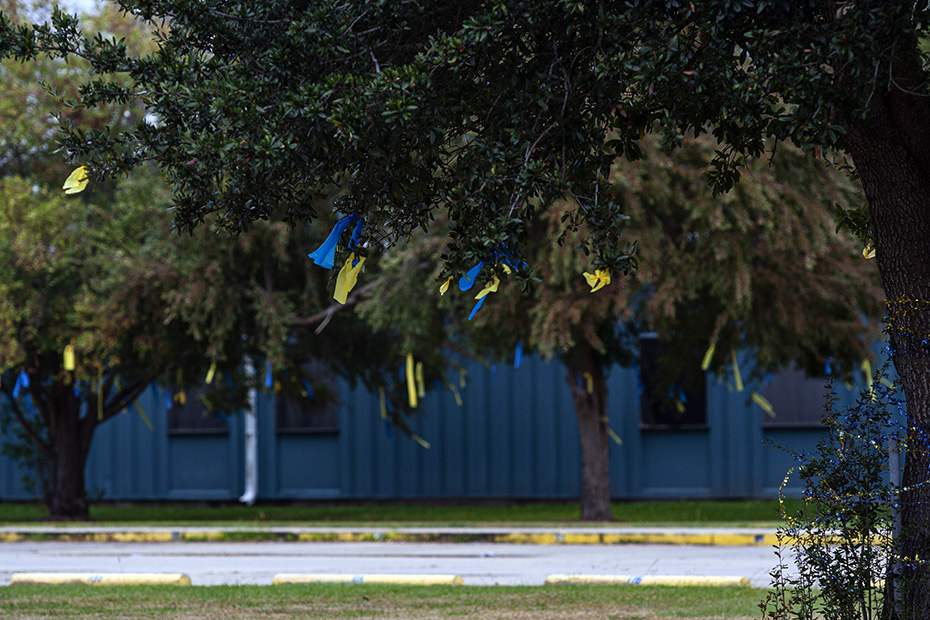
I had had an impact at the school where I had worked, but I knew that that was in the past, and I was struggling to figure out what to do with my life then and, more importantly, how to do it, which was probably a factor in the powerfully sad feeling – and ‘lesson’ – of the day.
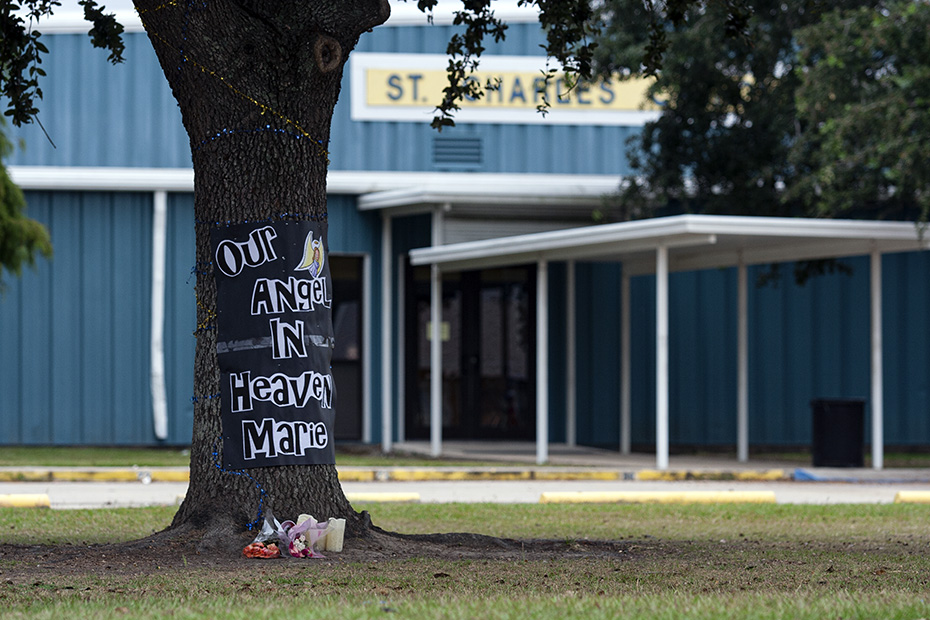
The lesson here is that life is very short and very temporary, and that the only thing that matters aside from trying to enjoy life and learn things is whether and the degree to which you help to make life better for others, and that maybe you can’t do the former without doing the latter.
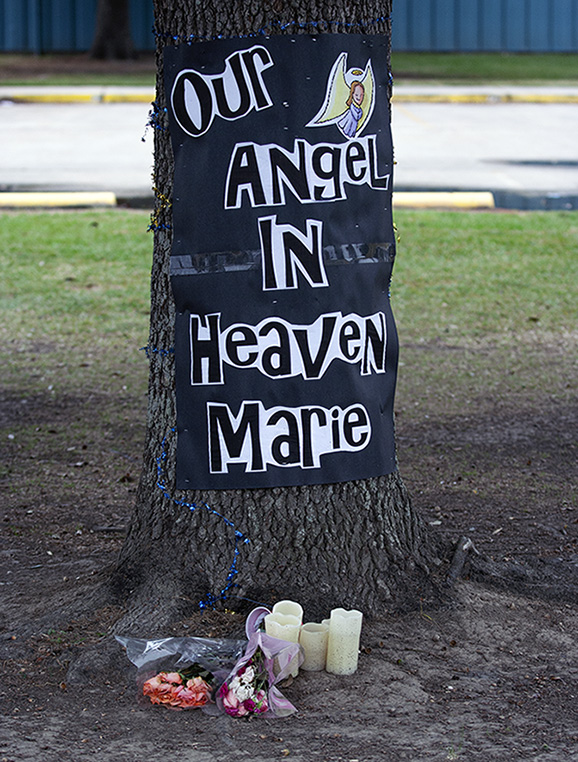
I had been doing great at that for a few years before this time, but I was struggling to find my way.
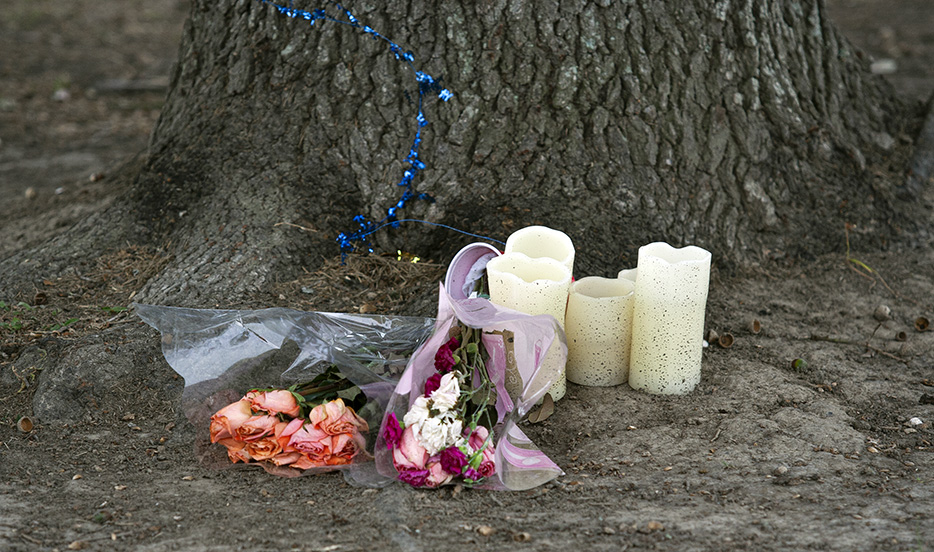
Thank you, Rie.
Other than that I then went visit Uncle Pat and Aunt Lynn nearby and that it was a great visit and that they knew of Marie, I really don’t have anything else to say, and that’s probably a good thing.
Jim
